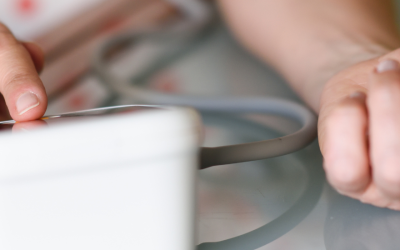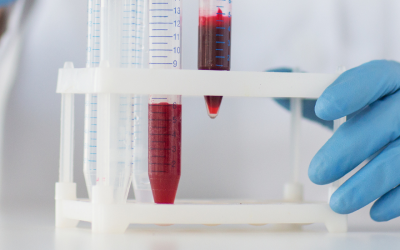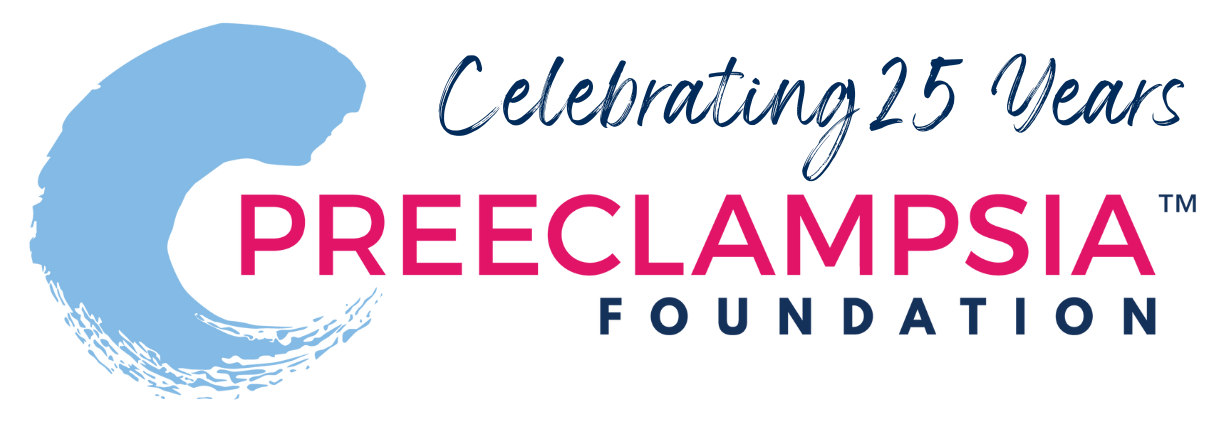
Can molecular subtyping help predict preeclampsia before symptoms develop?
Hypertensive disorders of pregnancy (HDP), including preeclampsia, affect 1 in 6 pregnancies. HDP is a general term for a range of mild to severe outcomes. Until now there has not been a reliable way to predict whether HDP will develop into severe preeclampsia, including persistent high blood pressure (systolic bp > 140 mmHg or diastolic bp > 90 mmHg), low platelet count, elevated liver enzymes, swelling of the face and hands, severe headaches, and extreme pre-term delivery, with enough time for doctors to take advantage of low-risk interventions.
Risk assessments that rely on high-risk factors (such as chronic hypertension or a history of preeclampsia) fail to predict a high number of HDP cases that develop, because only 5% of pregnant patients in the U.S. meet such criteria. For the remaining 95% clinicians rely on a combination of weakly predictive “moderate” risk factors. Researchers conducted a study to understand the biological factors that drive various pregnancy complications, aiming to develop biologically-driven predictive tools for potential new preventative treatment strategies, months before preeclampsia symptoms manifest.
The results of new research conducted as part of The Miracle of Life Study has identified two genes—PAPPA2 and CD163— that can be used as biomarkers to predict whether severe preeclampsia will develop well before symptoms develop.
In this study, about 9,000 racially, ethnically, and geographically diverse women were followed from their second trimester of pregnancy until after delivery. The majority of participants (about 82%) had no high-risk factors for preeclampsia such as chronic hypertension, diabetes, chronic kidney disease, nor a history of preeclampsia. Fewer than 20% of participants had one or more high risk factors.
Scientists sequenced RNA in blood samples collected from participants at 17-22 weeks gestation. Sequence information was used to identify and measure the levels of genes present at the time samples were collected. They discovered that women who developed preeclampsia had higher levels of PAPPA2 and CD163 than women who were not diagnosed with preeclampsia. PAPPA2, which is produced by the placenta and is part of the insulin pathway, was highly elevated only in women who were first diagnosed and/or delivered before 37 weeks gestation and who develop severe symptoms in 90% of cases. CD163, which is produced by the immune system, was elevated in women diagnosed with preeclampsia after 37 weeks, including postpartum diagnoses, delivered after 37 weeks, and only developed severe symptoms in 30% of cases.
These results lead to the conclusion that there are several subtypes of preeclampsia associated with these genes. Severe cases likely originate in the placenta tissues and are associated with high levels of PAPPA2. Less severe cases appear to originate in the immune system and are associated with high levels of CD163.
Take Home:
- A high level of PAPPA2 and CD163 are indicators of HDP and preeclampsia that can be detected in blood samples around 20 weeks gestation. These biomarkers can predict the development of preeclampsia even in women without high-risk factors.
- PAPPA2 is an indicator of placenta-associated subtypes of preeclampsia. Placenta subtypes have a high chance of causing the most severe forms of preeclampsia.
- Immune-associated preeclampsia subtypes are associated with CD163 and often cause less severe forms of preeclampsia.
The validation of these two distinct molecular subtypes allows the stratification of HDP and creates new opportunities for preventative interventions. This creates an opportunity to shift the focus from generalized “moderate” risk factors, which are susceptible to bias or difficult to assess clinically, to a precision-medicine approach in maternal health.
Citation: Molecular subtyping of hypertensive orders of pregnancy. Elovitz et al., 2025. Nature Communications
Link: https://www.nature.com/articles/s41467-025-58157-y
ABOUT RESEARCH ROUNDUP
Each quarter, our team of science writers reviews the most current research studies related to hypertensive disorders of pregnancy and summarizes those studies of greatest interest and potential impact to our community, including research studies related to risk assessment, diagnosis, prevention, and treatment. Special thanks to our volunteer research team, including Dr. Sig-Linda Jacobson, Dr. Jennifer Mitchell, Dr. Julie Reynolds, and Amanda Yang who make Research Roundup possible, and to our Patient Advisory Council, who reviews these materials from the patient perspective.
Related Articles

Your story is needed to improve outcomes for moms like you. Add your voice to critical preeclampsia research to ensure that every story is heard.

Frequently asked questions about the Preeclampsia Registry, a patient-driven registry and biobank.

The Preeclampsia Foundation offers research funding, study recruitment, and other patient engagement services to researchers.

We provide research grant funding to advance progress towards detection, prevention, or treatment of preeclampsia, HELLP syndrome, and other hypertensive disorders of pregnancy.

Hypertensive disorders of pregnancy significantly increase your risk of developing long-term heart problems. A careful review of blood pressure elevations during and after pregnancy may assist in iden...

Hypertensive disorders of pregnancy (HDP) can affect different groups of women in different ways, and even though we know this happening, we don't fully understand why. There are many factors, like bi...

There is growing evidence that studies examining pregnancy and its complications need to start early within the pregnancy to fully understand the nature of preeclampsia. Key gestational milestones, wh...

It is known that chronic hypertension and high BMI (body mass index) are risk factors for hypertensive disorders of pregnancy (HDP). Studies documenting this risk have usually assessed blood pre...

Several biomarker tests are under development to predict or diagnose preeclampsia. While none of these tests are yet widely accepted in U.S. clinical practice, two FDA-approved tests are available in...



